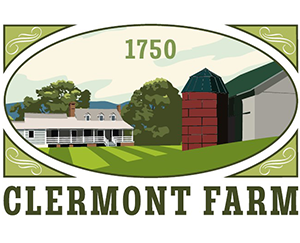John Vance
(ca. 1700/1705 - probably 1760)
Official grant from Lord Fairfax to John Vance, June 13, 1751, 353 acres (today 362)
John Vance was the man who, in 1750, asked for and received from Lord Fairfax and his 2.5 million-acre Proprietary the specific grant of land later called Clermont Farm. George Washington, age 18 and newly licensed the year before, performed the survey of 353 acres on October 19. The order approving the survey written out by Lord Fairfax’s agent makes it clear that Vance had been farming this land (and using the white oak for his barrel-making business) since 1742. He is a man of many mysteries. We do not know when he was born. Y-DNA makes it certain that this John Vance is not related to the Vance family that settled on Hogue Creek in Frederick County, as is often claimed. We do not know his wife Elizabeth’s maiden name. (She was not Elizabeth Glass.)
We know that his will was “proved in Frederick County” in October 1760, sometime after his death. The will was made and signed by him in 1755, the signature being the indicator that he was literate, not surprising in a skilled craftsman running a business. He and Elizabeth had four children identified in his will: Alexander, John, Hannah (Crawford), and Elizabeth (Springer). Son Alexander Vance was a chain carrier in Washington’s survey of Clermont, as was his son-in-law William Crawford (surveyor, friend of Washington, future hero of the Revolution), married to his daughter Hannah. The fact of their marriage in 1744, that Crawford was from the Opequon Creek area of Frederick County, and that John Vance was squatting on Clermont as of 1742, suggests he had been in the area for a while.
Vance decides to sell in 1753 – there is a possibility of ill health. The sale is to Thomas Wadlington, a merchant and mill owner from Fairfax County, and a fellow parishioner of Washington at the Pohick Church. Interestingly, Wadlington was a marker for Washington on two surveys in March 1751, on which survey crews William Crawford served as a chain carrier. So the buyer of Clermont from John Vance in 1753 had been acquainted with Vance’s son-in-law for at least two years before buying Clermont, as well as with Washington, who had surveyed it in 1750.

